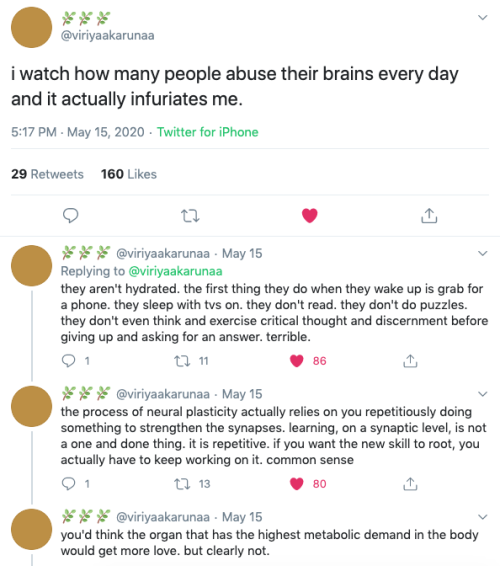Experience Tumblr like never before
Disability Resources - Blog Posts
Blog Update ﮩ٨ـﮩﮩ٨ـ♡
Salutations all! Just letting everyone know that I've gone through all my posts and updated everything with alt text to make it more accessible. ˚ʚ♡ɞ˚
Also I now have everything up on my AO3 and will be posting on there alongside this blog. So if you prefer to read on there, thats also an option! о( ˶^▾^˶ )о
Please let me know if there is any tweaks, things I can do, or keep in mind to make this blog easier for you to use. I have a family member and close friend with dyslexia, so I've been trying to use emphasis and colors in my posts to assist with that.
In case anyone is interested, here are some references for blog, website, and graphic designing in a disability friendly way~







People with low spoons, someone just recommended this cookbook to me, so I thought I’d pass it on.
I always look at cookbooks for people who have no energy/time to do elaborate meal preparations, and roll my eyes. Like, you want me to stay on my feet for long enough to prepare 15 different ingredients from scratch, and use 5 different pots and pans, when I have chronic fatigue and no dishwasher?
These people seem to get it, though. It’s very simple in places. It’s basically the cookbook for people who think, ‘I’m really bored of those same five low-spoons meals I eat, but I can’t think of anything else to cook that won’t exhaust me’. And it’s free!




I’m still tweaking it, but something the Visible app has hammered home these past few weeks is just how much energy my body expends existing.
Currently lying perfectly still and I’m in the ‘exertion zone’ because I’m in so much nerve pain it's making my heart rate elevate.
Being in pain is burning up my pace points. I’ve used two since I woke up this morning simply by being conscious.
Anyone who dismisses the effects of chronic pain on the body or tells you to exercise to push through it is formally invited to throw themselves into the sun.
I found an extremely dope disability survival guide for those who are homebound, bedbound, in need of disability accommodations, or would otherwise like resources for how to manage your life as a disabled person. (Link is safe)

It has some great articles and resources and while written by people with ME/CFS, it keeps all disabilities in mind. A lot of it is specific to the USA but even if you're from somewhere else, there are many guides that can still help you. Some really good ones are:
How to live a great disabled life- A guide full of resources to make your life easier and probably the best place to start (including links to some of the below resources). Everything from applying for good quality affordable housing to getting free transportation, affordable medication, how to get enough food stamps, how to get a free phone that doesn't suck, how to find housemates and caregivers, how to be homebound, support groups and Facebook pages (including for specific illnesses), how to help with social change from home, and so many more.
Turning a "no" into a "yes"- A guide on what to say when denied for disability aid/accommodations of many types, particularly over the phone. "Never take no for an answer over the phone. If you have not been turned down in writing, you have not been turned down. Period."
How to be poor in America- A very expansive and helpful guide including things from a directory to find your nearest food bank to resources for getting free home modifications, how to get cheap or free eye and dental care, extremely cheap internet, and financial assistance with vet bills
How to be homebound- This is pretty helpful even if you're not homebound. It includes guides on how to save spoons, getting free and low cost transportation, disability resources in your area, home meals, how to have fun/keep busy while in bed, and a severe bedbound activity master list which includes a link to an audio version of the list on Soundcloud
Master List of Disability Accommodation Letters For Housing- Guides on how to request accommodations and housing as well as your rights, laws, and prewritten sample letters to help you get whatever you need. Includes information on how to request additional bedrooms, stop evictions, request meetings via phone, mail, and email if you can't in person, what you can do if a request is denied, and many other helpful guides
Special Laws to Help Domestic Violence Survivors (Vouchers & Low Income Housing)- Protections, laws, and housing rights for survivors of DV (any gender), and how to get support and protection under the VAWA laws to help you and/or loved ones receive housing and assistance
Dealing With Debt & Disability- Information to assist with debt including student loans, medical debt, how to deal with debt collectors as well as an article with a step by step guide that helped the author cut her overwhelming medical bills by 80%!
There are so many more articles, guides, and tools here that have helped a lot of people. And there are a lot of rights, resources, and protections that people don't know they have and guides that can help you manage your life as a disabled person regardless of income, energy levels, and other factors.
Please boost!

I needed this drag. Let’s change guys and not look back
We need like “unclench your jaw” posts but for eye strain. Like
Go look at something 20ft away for 20 seconds.